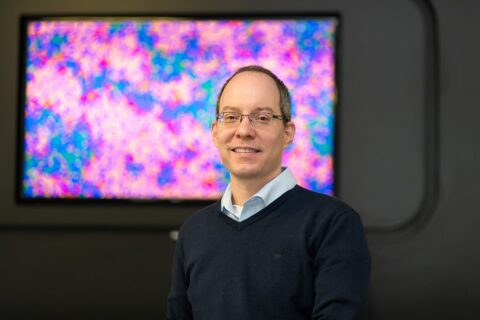Mathematical models for new insights into the immune response
FAU researchers combine experimental data with machine learning methods
When fighting infections or tumors, entire armies of immune cells must coordinate their behavior. A team from Friedrich-Alexander-Universität Erlangen-Nuremberg (FAU) will investigate which immune processes play a role in this over the next three years. The researchers are focusing on T cells. These cells swarm out during an immune response, multiply, and develop into different variants. The team aims to understand how these processes interact and influence each other. To achieve this, they are analyzing the behavior of T cells using mathematical methods. The researchers will also use machine learning algorithms. The Boehringer Ingelheim Foundation supports the project through its Rise Up! program with funding of almost €500,000.
T cells are somewhat like well-trained police dogs: As long as they don’t detect any “culprit” in the form of a pathogen or malignant cell lurking somewhere in the organism, they remain quiet in the lymph nodes. They only become active when the body’s immune system gives them information with which to track down the pathogen.
Once that happens, the cells rapidly divide and transform into various cell types, each performing different functions in combating the threat. Within a short time, an entire army of specialized forces emerges. Among them are the so-called killer T cells, which can detect and eliminate infected body cells or cancer cells, and regulatory T cells, which fine-tune the immune response to avoid excessive or weak reactions. A significant portion of these defense troops then disperses to the site of infection or inflammation.
An effective immune response occurs only when the right immune cells are present in the correct numbers and composition at the right time and place,” explains Prof. Dr. Frederik Graw from FAU’s Chair of Hematology and Oncology. “We want to understand how various mechanisms come into play during this process.” Graw, a mathematician, leads the “Modeling of Immune Processes” research group at Department of Medicine 5 (head: Prof. Dr. Andreas Mackensen). Uniklinikum Erlangen In the project recently approved by the Boehringer Ingelheim Foundation, Graw and his team will analyze the behavior of T cells during an immune response by combining experimental data with new mathematical methods.
T cells influence each other
This is anything but trivial. Immunocytes do not act independently; they can influence each other by releasing signaling molecules. The career path a T cell takes upon activation—whether it becomes an effector cell directly combating the challenge or a memory cell allowing long-term protection—depends on the cocktail of signaling molecules in its environment. “The migration of cells, their entry into specific tissues and organs, is also controlled by signaling molecules and receptors on the cell surface,” says Graw. “These receptors and molecules determine whether a cell remains in the lymph node or disperses to other tissues.”
To gain a better understanding of these processes, the researchers will develop mathematical models and combine them with experimental data received from partners at Uniklinikum Erlangen and international groups. They aim to explore how individual cell properties provide insights into the development of an immune response. In this context, algorithms from the field of machine learning will also be used. These self-learning methods adjust various parameters of the model until the simulated immune response matches what is actually observed in experiments. The project fits very well into the Erlangen AI Health Hub, where the Bavarian state government promotes the integration of artificial intelligence and medical technology.
“Our results aim to enhance the understanding of T-cell responses in infections and cancer,” says Graw. “We particularly focus on the role of cell migration and how immune responses form in individual tissues.” In the long term, these insights may contribute to the development of new immunotherapies, for instance for cancer or chronic inflammatory bowel diseases.
About the Rise Up! program:
The Boehringer Ingelheim Foundation is funding the project through its Rise Up! program until 2027 with almost €500,000. The program targets outstanding and creative basic researchers in biology, chemistry, and medicine who have accepted an associate professorship at a German university for the first time.
Further information:
Prof. Dr. Frederik Graw
Chair of Hematology and Oncology
Modeling of immune processes group at Uniklinikum Erlangen
Phone: +49 9131 85 47601
